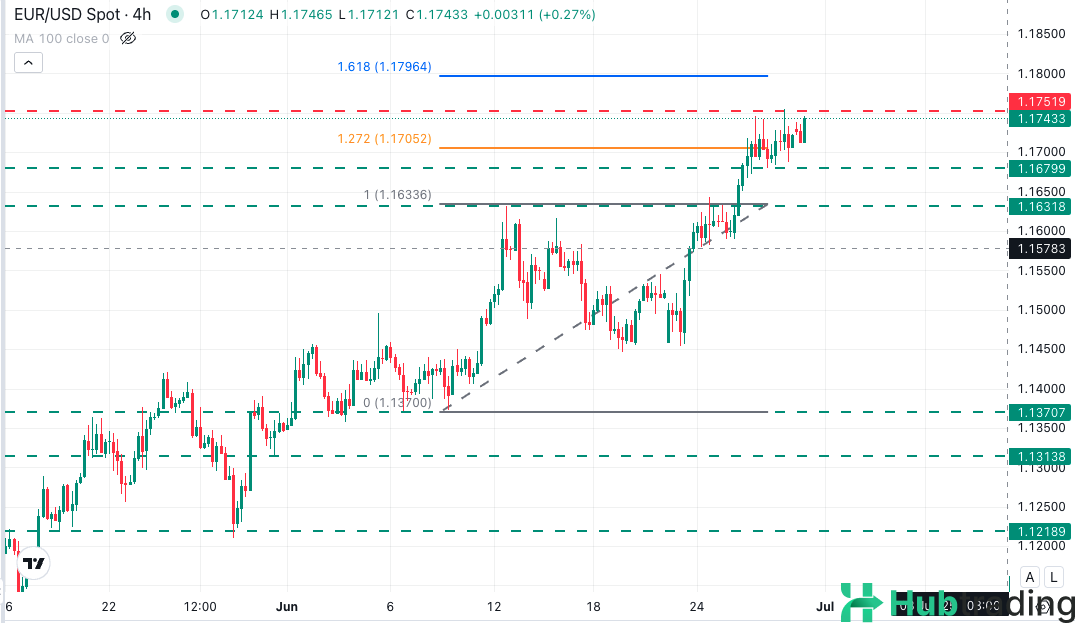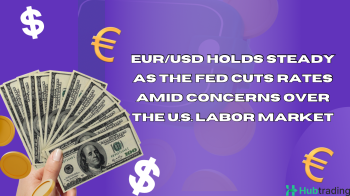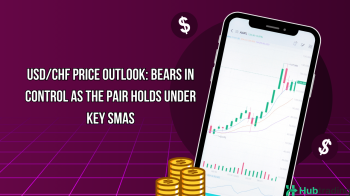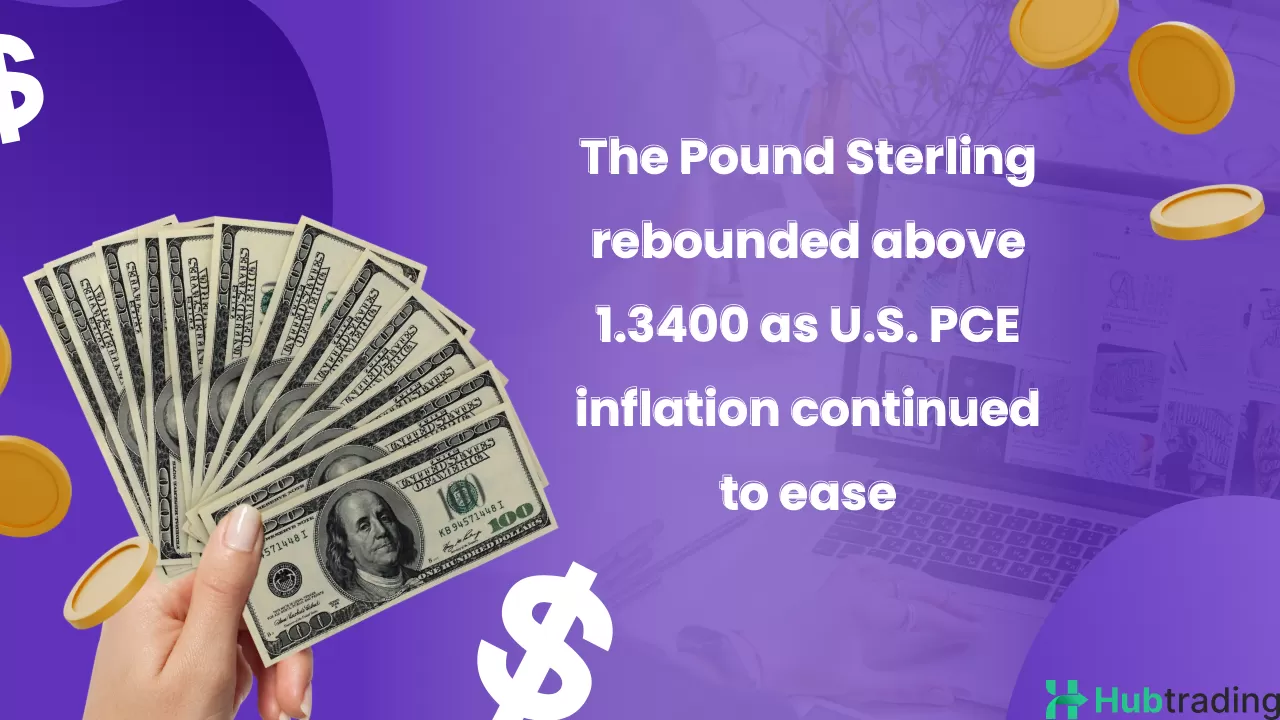- The Euro edges up as optimism over trade normalization pressures the safe-haven US Dollar.
- German Retail Sales unexpectedly declined in May.
- EUR/USD continues its upward momentum, with bulls eyeing the 1.1750 level.
The EUR/USD pair is posting modest losses on Monday but remains above the 1.1700 mark, holding close to the multi-year highs seen last week. Renewed optimism surrounding global trade developments is supporting risk appetite and keeping the safe-haven US Dollar under pressure.
Positive signals from US trade talks are lifting market sentiment. US Treasury Secretary Scott Bessent confirmed on Friday that the US and China finalized a deal on rare earth imports, completing an earlier agreement and marking a step toward improved relations between the two economic powers.
Elsewhere, Canada’s decision to withdraw its digital services tax has reopened trade negotiations with the US, while Japan’s lead negotiator, Ryosei Akazawa, is set to remain in Washington to continue discussions. Bessent also hinted over the weekend that tariff talks could continue through to US Labor Day on September 1, offering more time to secure major agreements and bolstering hopes for global trade normalization.
Meanwhile, US fiscal concerns are also weighing on the Dollar. A sweeping tax bill currently making its way through the Senate is projected to add over $3 trillion to US debt over the next decade, raising fears of a potential debt crisis.
In the Eurozone, Germany’s Retail Sales unexpectedly declined in May, reinforcing concerns over weak economic momentum in the bloc’s largest economy. Looking ahead, Germany’s June CPI data and speeches from Fed officials Raphael Bostic and Austan Goolsbee may provide further direction for EUR/USD. However, the main focus this week will be Thursday’s US Nonfarm Payroll report, ahead of the US Independence Day holiday on Friday.
Daily Market Movers: Trade Optimism Weighs on the US Dollar
- The US Dollar (USD) remains under pressure against most major currencies, with the US Dollar Index (DXY) hovering near its lowest levels since 2022. Renewed optimism in global trade—sparked by a US-China agreement on rare earth imports and the extension of the July 9 trade deadline into September—has fueled risk appetite, favoring risk-sensitive currencies over the safe-haven USD.
- In Europe, the Euro (EUR) faced some headwinds after Germany’s Retail Sales unexpectedly fell 1.6% in May, missing expectations of a 0.5% rise. Despite this setback, the EUR retains a broadly positive tone after gaining nearly 2% last week.
- Attention now turns to Germany’s preliminary June inflation data, which is expected to show a slight monthly rise of 0.2% and a 2.2% annual increase—up from 0.1% and 2.1% in May, respectively.
- In the US, Monday's economic calendar is relatively light, with markets awaiting speeches from Fed officials Raphael Bostic and Austan Goolsbee. Investors are closely watching for any confirmation of the growing expectation for a rate cut in September.
- Last Friday’s US PCE Price Index revealed persistent inflationary pressure. While the headline index rose by 0.1% monthly and 2.3% annually (in line with forecasts), the core reading climbed more than expected—up 0.2% on the month and 2.7% year-over-year. Still, the data hasn’t derailed market hopes for upcoming rate cuts. According to the CME FedWatch Tool, the probability of a 25 basis-point rate cut in September has surged to over 90%, compared to just above 60% two weeks ago, while the odds for a July cut remain low at 20%.
EUR/USD Outlook: Bulls Eye 1.1750 Resistance

EUR/USD continues to trade with a bullish bias following last week’s strong rally. The pair is consolidating just below the multi-year high near 1.1750, as the 4-hour Relative Strength Index (RSI) retreats from overbought levels. The pair is currently moving within a tight 70-pip range.
Immediate resistance lies at 1.1745, the highs from June 26–27. A breakout above this level would expose the next target at 1.1795, which corresponds to the 161.8% Fibonacci extension of the June 10–12 rally.
On the downside, initial support is seen at 1.1680 (June 27 low). A break below this level could open the door toward the 1.1630–1.1640 area, a former resistance zone marked by the highs on June 12, 24, and 25.





